A Comprehensive Guide to Safe Dating in the Age of Online Platforms
In today’s digital era, finding love or making connections through online dating platforms and apps

The U.S. Centers for Disease Controls and Prevention (CDC) reports that nearly one in five Americans had an STI (Sexually Transmitted Infection, also known as STD) in 2018 alone. That calculates to 68 million people that STDs infected.
One common STD, gonorrhea, causes gonococcal arthritis, a type of septic arthritis that spreads through sexual contact. As the bacterial infection enters your bloodstream, it spreads throughout the body and to the joints.
Gonococcal arthritis is a treatable disorder. After beginning treatment, most symptoms normally improve within 1-2 days. Even though this infection is an STD that causes joint pain, you are likely to make a full recovery with treatment.
If you suspect that you have gonococcal arthritis after sexual intercourse, get a rapid STD test. Providers such as Rapid STD Testing can connect you with a lab in your area to ensure that you start treatment as soon as possible.
Two STDs cause joint pain: gonorrhea and chlamydia. Though we will discuss the most common differences here, it’s always best to get same-day STD testing to know which STI you might have.
Symptoms common to both STDs occur a few weeks after the initial infection. They include:
Gonorrhea is a bacterial infection that can affect the genitals, rectum, eyes, throat, and joints.
Populations at high risk for a gonorrhea infection include women under 25 and men who have intercourse with other men. Gonorrhea’s STD symptoms in both men and women include painful urination and intercourse.
Common symptoms in people with penises include pain in one testicle, swelling of one or both testicles, and discharge from the tip of the penis that looks like pus.
Common symptoms in people with vaginas include abnormal vaginal discharge or bleeding (between periods or after sex) and pelvic or abdominal pain.
Doctors prescribe antibiotics to treat gonorrhea in both sexual partners. To stop the spread of STIs, experts strongly suggest that you contact any sexual partners after your diagnosis. Even if they do not display symptoms, they will likely need to receive the same treatment.
Chlamydia exhibits similar symptoms to gonorrhea, so STI testing is essential if you suspect having either of these infections. Chlamydia can cause reactive rather than septic arthritis.
Common symptoms associated with chlamydia include painful urination, testicles, or intercourse. You may also have abnormal discharge from the penis or vagina, with occasional vaginal bleeding after sex.
Doctors also treat chlamydia with antibiotics, and most adverse effects subside after 1-2 weeks. During the recovery period, patients must abstain from sex because reinfection can occur. Make sure that both you and your partner(s) get treatment.
Sometimes STDs can go relatively unnoticed because they do not produce typical symptoms. In the cases of gonorrhea and chlamydia, the infection is more likely to spread to the bloodstream, thus causing STD joint pain and STD bone pain. An STD that causes joint and muscle pain can trigger either septic or reactive arthritis.
Human bodies consist of complex systems such as the respiratory, vascular, muscular, and others. The vascular (or circulatory) system encompasses the parts of the body that carry blood throughout, such as veins and arteries. The veins in your body deliver both oxygen and nutrients to living tissue. When bacteria enter the vascular system and thus your bloodstream, they quickly spread to every part of the body.
Joints do not have the same defenses against infection as other parts of the body do. Thus, septic arthritis can easily enter joints. The body’s natural reaction is joint inflammation, which restricts blood flow and increases potential damage.
Reactive arthritis occurs when the body attacks its own tissue, mistaking it for a foreign element such as disease or bacteria. Reactive arthritis may affect the eyes and urinary tract as well as other areas. As bacteria spread, your body registers the infection and reacts so strongly that it begins to attack its own cells, even after the infection is gone. This phenomenon is known as an autoimmune disorder.
Arthritis occurs when one or more of the joints become inflamed. Many varieties of arthritis exist, and although this disease commonly affects the elderly, younger populations are also at risk.
Gonococcal arthritis is a type of septic arthritis that an untreated gonorrhea infection can trigger. Gonorrhea can pass between sexual partners through oral, anal, or vaginal sex. Gonorrheal bacteria use the joints to grow the infection, thus causing arthritis.
Gonococcal arthritis can cause both joint and tissue pain. It is uncommon to get gonococcal arthritis, but it requires immediate treatment upon discovery.
Statistically, female bodies are more likely to experience gonococcal arthritis than males. Teenagers and young adults are also more likely to contract gonorrhea, meaning that females in this age group have the highest risk of getting gonococcal arthritis.
However, anyone can contract this disease. Always practice safe sex, do regular STD testing, and see a doctor if you suspect that your symptoms are consistent with gonococcal arthritis.
Should you have symptoms of gonococcal arthritis, you will likely experience joint pain in your wrists, ankles, knees, and elbows. You may notice reduced mobility accompanied by red and swollen joints that are painful to move. Finally, you may feel a painful or burning sensation during urination.
Though gonococcal arthritis mostly affects the joints, it can transform into another type of infection known as disseminated gonococcal infection (DGI). If gonococcal arthritis becomes DGI, the symptoms become even more severe. DGI can present as skin lesions, fever, chills, malaise, or tendon inflammation.
Unfortunately, mothers can also pass untreated gonorrhea to newborns during childbirth, so infants are also prone to gonococcal arthritis—although they are but a small percentage of the population that the disorder affects.
Infants with gonococcal arthritis may exhibit symptoms such as:
These symptoms are all telltale signs that you and your child should get tested for an STD. Do not leave your symptoms untended.
Failing to treat gonococcal arthritis and DGI can lead to severe complications. Untreated bone pain from gonococcal arthritis can cause chronic joint pain and damage.
Untreated DGI can lead to:
Though DGI and gonococcal arthritis can be a link to the complications above, gonorrhea itself can have other severe effects. Leaving a gonorrhea infection untreated can cause pelvic inflammatory disease (PID) and an increased risk of contracting HIV.
Gonorrhea and PID can both cause sterility or infertility along with complications during pregnancy. In females, PID can cause ectopic pregnancies or increased scar tissue in the fallopian tubes.
Gonorrhea is a serious STI. All of these outcomes are preventable with effective and immediate treatment. If you suspect that you may have contracted gonorrhea or have an STD that attacks joints, get tested with Rapid STD Testing.
First, the medical professional must diagnose gonorrhea before they can confirm gonococcal arthritis, as gonorrhea causes the arthritic disorder. To diagnose gonorrhea, an expert takes a throat culture, urine and blood tests, or cervical gram stain.
Although you can request testing for only gonorrhea upon arrival at a test site, we highly recommend a 10-panel STD test. This test will check for several infectious diseases that people can contract through sexual intercourse, such as HIV, herpes, gonorrhea, chlamydia, and more.
Getting a 10-panel STD test is important even if you think you have gonococcal arthritis. Perhaps you could have developed reactive arthritis from a chlamydia infection instead, as the two share similar symptoms.
After a gonorrhea diagnosis, doctors generally run visual imaging, inflammatory markers, joint fluid, white blood cell count, and blood culture tests. Once the doctor confirms gonococcal arthritis, they will prescribe antibiotics such as ceftriaxone. You should always abstain from sex until you are STD-free to prevent the spread of the disease.
Doctors have the most up-to-date information about STI treatments, so their advice may vary from what we discuss in this article.
The most effective methods of prevention against STIs include abstinence or monogamy (being sexually active with only one partner). Attempt to limit the number of sexual partners with whom you interact while infected. If you have multiple sexual partners, you should exercise great caution and always practice safe sex.
In general, here are some preventive measures you can take:
If you have an STD that causes joint pain, help is available. Seek both testing and treatment immediately since it may be a gonorrhea infection.
If you suspect that you have contracted gonococcal arthritis or any other disorder caused by sexual activities, you should get tested immediately. At Rapid STD Testing, we can help.
We have over 2,500 STD testing centers nationwide, and testing results are available in 1-3 working days. All tests are FDA-approved and performed in CLIA-certified labs. Call our Rapid STD Testing team at (866) 872-1888 to find a center near you today.

No embarrassing exams, long waiting lines, or multiple visits. Just a quick lab visit for fast results.
Discover a lifestyle-focused approach to quality content at RapidSTDtesting.com. Unlike others, we don't rely on gimmicks or fabricated data to lure visitors. Our commitment goes beyond clicks – we're dedicated to answering the questions you search for online. With a team comprising medical experts and content specialists, our articles are meticulously crafted to promote STD testing, educate, and dismantle social stigmas.
Embrace a confidential atmosphere with our private testing options, ensuring your privacy is paramount. Every article is meticulously fact-checked and approved by medical advisors, guaranteeing accuracy and reliability. Our team, comprised of doctors and medical professionals, ensures that each piece of content serves a purpose – to inform, educate, and promote awareness.
Join us as we bridge the gap between medical expertise and lifestyle choices. RapidSTDtesting.com is your trusted source for informative, medically vetted content.